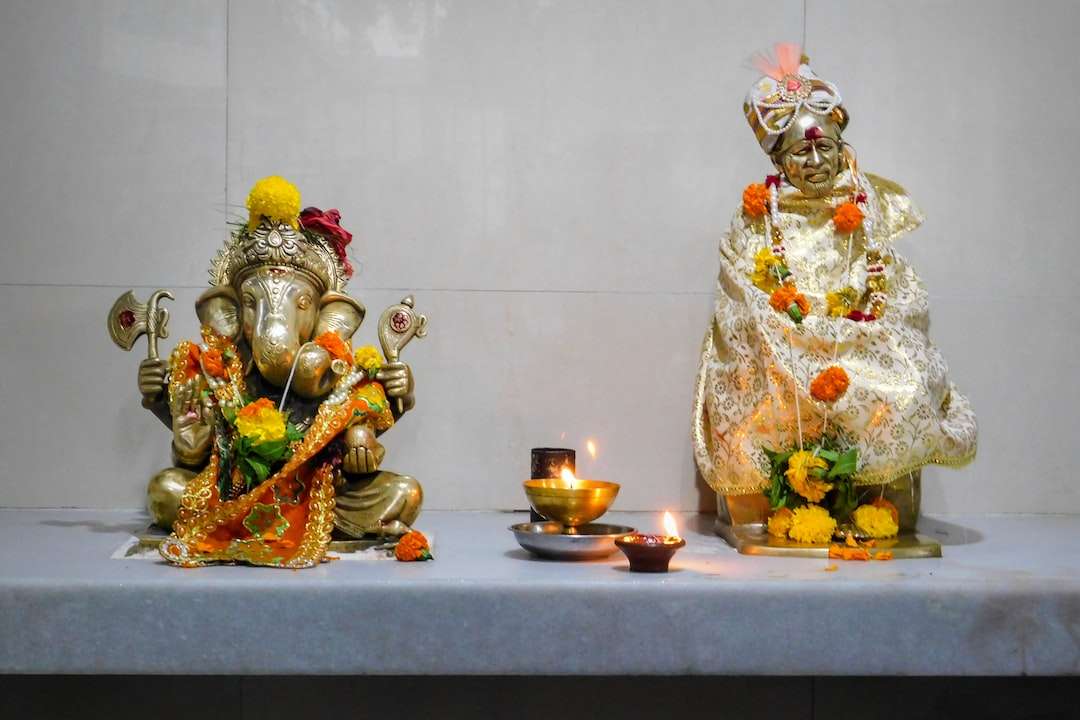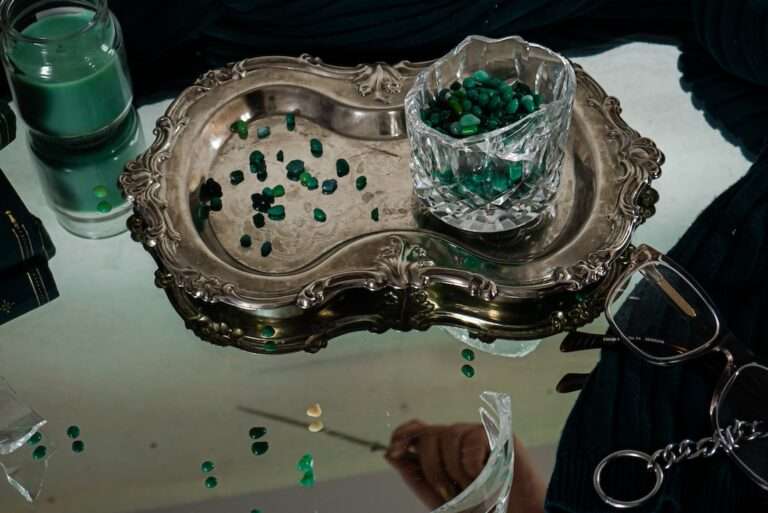Color Red Symbolism: Love, Passion, and Danger

The color red has long been associated with power, passion, and intensity. It is a color that demands attention and evokes strong emotions. From ancient civilizations to modern day, red has held significant symbolism in various aspects of life. Whether it is in art, fashion, advertising, or literature, the color red has a profound impact on our emotions and behaviors. In this article, we will explore the history of red symbolism, the psychology behind its effects, its significance in different cultures and religions, its power in art and design, its representation in fashion, advertising, literature, and nature, as well as its dark side.
The History of Red Symbolism: From Ancient Times to Modern Day
Red has held symbolic meaning in various ancient civilizations. In ancient Egypt, red was associated with life and victory. It was also used to represent the god of chaos and destruction. In ancient Rome, red was a symbol of power and authority. Emperors would wear red robes to signify their status. In ancient China, red was considered a lucky color and was associated with good fortune and joy.
In Christianity, red is often associated with the blood of Christ and martyrdom. It is also used to represent the Holy Spirit and the fire of God’s love. In Hinduism, red is associated with passion and desire. It is often used in wedding ceremonies to symbolize love and fertility. In Buddhism, red represents the life force and is often used in meditation practices.
In modern times, red continues to hold symbolic meaning. It is often used to represent love and passion. Red roses are a classic symbol of love and are often given on Valentine’s Day. Red is also associated with power and confidence. Many politicians wear red ties or dresses to convey strength and authority.
The Psychology of Red: How it Affects Our Emotions and Behaviors
The color red has a profound impact on our mood and behavior. It is a color that stimulates and energizes us. When we see the color red, our heart rate increases and our blood pressure rises. It is a color that grabs our attention and demands action.
Red is often associated with strong emotions such as love, anger, and passion. It can evoke feelings of excitement, desire, and intensity. It is a color that can make us feel more confident and powerful. Studies have shown that wearing red can increase our self-confidence and make us appear more attractive to others.
The cultural associations of red also play a role in how we perceive the color. In Western cultures, red is often associated with danger and warning signs. In Eastern cultures, red is seen as a lucky color and is often used in celebrations and festivals.
The Symbolism of Red in Different Cultures and Religions
In Chinese culture, red is considered the most auspicious color. It is associated with good luck, happiness, and prosperity. Red is often used in weddings, festivals, and other celebrations. Red envelopes filled with money are given as gifts during the Chinese New Year.
In Indian culture, red is associated with purity and fertility. It is often used in wedding ceremonies to symbolize love and passion. Brides often wear red saris or lehengas on their wedding day.
In African culture, red is associated with life and vitality. It is often used in traditional clothing and accessories. Red beads are worn as a symbol of protection and strength.
In Native American culture, red is associated with the earth and the life force. It is often used in rituals and ceremonies to represent power and energy.
The Power of Red in Art and Design: Examples from History and Today
Red has been used in art for centuries to convey strong emotions and create visual impact. In Renaissance art, red was often used to represent power, wealth, and passion. Artists such as Titian and Rubens used red as a focal point in their paintings to draw the viewer’s attention.
In contemporary art, red continues to be a powerful color. Artists such as Mark Rothko and Barnett Newman used red as a primary color in their abstract paintings to evoke strong emotions and create a sense of depth and intensity.
In graphic design, red is often used to grab attention and convey messages. It is a color that stands out and demands to be noticed. Many logos and advertisements use red to create a sense of urgency or excitement.
Red in Fashion: How it Represents Sexuality, Confidence, and Power
Red has a long history in the world of fashion. It is a color that represents sexuality, confidence, and power. In ancient Rome, red was associated with wealth and status. Only the wealthy could afford to wear red clothing.
In modern times, red is often associated with passion and desire. Red dresses are often worn to make a bold statement and attract attention. Red lipstick is seen as a symbol of confidence and femininity.
Red is also a popular color on the runway. Many designers use red in their collections to create drama and impact. Red shoes, handbags, and accessories are often seen as statement pieces that can elevate an outfit.
Red in Advertising: How it Grabs Attention and Conveys Messages
Red is one of the most commonly used colors in advertising. It is a color that grabs attention and conveys messages effectively. Many fast food chains use red in their logos and signage to create a sense of urgency and excitement.
The psychological impact of red in advertising is significant. Studies have shown that seeing the color red can increase our heart rate and stimulate our appetite. It is a color that makes us feel more alert and energized.
Examples of successful red advertising campaigns include Coca-Cola’s iconic red logo, which has become synonymous with the brand’s image of happiness and joy. Red Bull’s advertising campaigns also use red to convey energy and excitement.
The Dark Side of Red: How it Represents Danger, Anger, and Violence
While red is often associated with positive emotions, it also has a dark side. Red is often used to represent danger, anger, and violence. In Western cultures, red is often used in warning signs and danger signals. Red lights and sirens are used by emergency vehicles to alert people to potential danger.
The color red can also evoke feelings of anger and aggression. Studies have shown that seeing the color red can increase our heart rate and make us feel more aggressive. It is a color that can trigger strong emotions and reactions.
Red in Literature and Poetry: Examples of Love, Passion, and Heartbreak
Red has long been used in literature and poetry to symbolize love, passion, and heartbreak. In Shakespeare’s Romeo and Juliet, red is used to represent both love and violence. The famous line “What light through yonder window breaks? It is the east, and Juliet is the sun” compares Juliet’s beauty to the rising sun, which is often depicted as red.
In poetry, red is often used to describe the intensity of emotions. Poets use words such as “fiery,” “burning,” and “flaming” to convey the passion and desire associated with the color red.
The Science of Red: How it Stimulates the Brain and Increases Energy
The color red has a physiological impact on our brain and body. When we see the color red, our brain releases adrenaline, which increases our heart rate and blood pressure. This physiological response can make us feel more alert and energized.
Red is often used in sports and exercise to enhance performance. Athletes who wear red uniforms or gear have been shown to perform better than those who wear other colors. The color red is believed to increase our energy levels and improve our focus and concentration.
Red in Nature: How it Represents Life, Vitality, and Growth
Red is also a color that is found in nature. It is often associated with life, vitality, and growth. In flowers, red is often used to attract pollinators such as bees and butterflies. Red fruits such as apples and strawberries are often associated with health and nutrition.
In animals, red is often used to signal danger or aggression. Many poisonous animals have red markings to warn predators of their toxicity. Red birds such as cardinals are often seen as symbols of vitality and passion.
In conclusion, the color red holds significant symbolism in various aspects of life. From ancient civilizations to modern day, red has represented power, passion, and intensity. It has a profound impact on our emotions and behaviors, stimulating our senses and evoking strong reactions. Red is a color that demands attention and conveys messages effectively. Whether it is in art, fashion, advertising, literature, or nature, the color red continues to captivate and inspire us. Its power lies in its ability to evoke strong emotions and create visual impact.
If you’re interested in exploring the symbolism of red, you might also find the article on the symbolism of the star intriguing. Stars have long been associated with various meanings and interpretations across different cultures and belief systems. From representing guidance and hope to symbolizing divine presence and enlightenment, stars hold a significant place in our collective consciousness. To delve deeper into the symbolism of the star, check out this fascinating article: Symbolism of the Star.
FAQs
What is red symbolism?
Red symbolism refers to the use of the color red to represent certain ideas, emotions, or concepts in art, literature, religion, and culture.
What are some common meanings associated with the color red?
Red is often associated with passion, love, anger, danger, power, courage, and vitality. It can also symbolize blood, fire, and the sun.
What are some examples of red symbolism in art?
Red is often used in art to convey strong emotions or to draw attention to certain elements. For example, in Renaissance paintings, the Virgin Mary is often depicted wearing a red robe to symbolize her passion and suffering. In modern art, artists may use red to create a sense of energy or to contrast with other colors.
What are some examples of red symbolism in literature?
Red is often used in literature to symbolize love, passion, or danger. For example, in Nathaniel Hawthorne’s “The Scarlet Letter,” the protagonist wears a red letter “A” on her chest to symbolize her adultery and shame.
What are some examples of red symbolism in religion?
Red is often used in religious art and iconography to symbolize divine love, sacrifice, or martyrdom. For example, in Christianity, the color red is associated with the blood of Christ and is often used in depictions of the crucifixion.
What are some cultural associations with the color red?
In many cultures, red is considered a lucky or auspicious color. In China, red is associated with good fortune and is often used in weddings and other celebrations. In India, red is associated with purity and is often worn by brides. In Western cultures, red is often associated with Christmas and Valentine’s Day.





